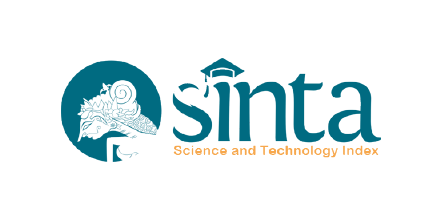The Job Sectors That Affecting the Employment Rate of Disabled People in Asia and Pacific Countries
DOI:
https://doi.org/10.21776/ub.ijds.2018.5.1.11Keywords:
employment rate of disabled people, services, industries, multiple linear regressionAbstract
Disabled people certainly have a same opportunity to pursue their career life through working in the certain job sector that is suitable based on their abilities and skills. Employment rate of disabled people expresses the percentage number of disabled people who have successfully been producing the salary income. Therefore, this study aimed to identify the significant job sector that could give the real influence to the employment rate of disabled people in order to they know the appropriate job sector. Those job sectors were determined by applying the multiple linier regression equation with classical assumption test. Anyway, the data in this study was adopted from United Nations publication for employment rate of disabled people in Asia and Pacific countries 2015. The result showed that services and industries sector have the positive significant impact to the employment rate of disabled people with the adjusted coefficient determination value reveals to 85 %.
References
Chatterjee S. and Ali S. H. 2012. Regression Analysis by Example Fifth Edition. New Jersey : John Wiley & Sons, Inc.
Cheyns E. 2011. Multi-stakeholder Initiatives for Sustainable Agriculture: Limits of the "Inclusiveness" Paradigm. ResearchGate, pp. 1-28.
Economic and Social Commission for Asia and the Pacific. 2015. Disability at a Glance 2015 Strengthening Employment Prospects for Persons with Disabilities in Asia and the Pacific. Bangkok: United Nations.
Gannon B. and Brian N. 2006. The Dynamics of Disability and Social Inclusion. Dublin: The Equality Authority.
Kiribaki A. et.al. 2008. Report of the Evaluation of the Sustainable Agriculture for People with Disabilities (SAPED) Programme. Uganda : Send A Cow Uganda (SACU).
Kismiantini. 2010. Handout Analysis Regresi. Yogyakarta : Jurusan Pendidikan Matematika Fakultas Matematika dan Ilmu Pengetahuan Alam Universitas Negeri Yogyakarta.
Kutner M. H., et.al. 2005. Instructor Solutions Manual to accompany Applied Linear Statistical Models Fifth Edition. Chicago : McGraw-Hill.
Lock, J. 2012. Pendapat dan Perubahan Terhadap Difabel Apakah Hidup Menjadi Lebih Muda Atau Lebih Sulit Untuk Orang Yang Cacat Dalam Masyarakat Indonesia?. Malang : Fakultas Ilmu Sosial dan Ilmu Politik Universitas Muhammadiyah Malang.
Perry, D.A. 2007. Employability A Resource Guide On Disability for Employers in Asia and the Pacific. Bangkok : International Labour Organization.
Poerwanti, S.D. 2017. Pengelolaan Tenaga Kerja Difabel untuk MewujudkanWorkplace Inclusion. INKLUSI: Journal of Disability Studies. 4(1) : 1-24.
Quinn G., et.al. 2002. Human Rights and Disability the Current Use and Future Potential of United Nations Human Rights Instruments in the Context of Disability. New York and Geneva: United Nations.
Sudarmanto, R. G. 2003. Analisis Regresi Linear Ganda dengan SPSS. Jakarta : Graha Ilmu.
Weisberg S. 2005. Applied Linear Regression Third Edition. New Jersey : John Wiley & Sons, Inc.
World Health Organization and United Nations Economic and Social Commission for Asia and the Pacific. 2008. Training Manual on Disability Statistics. Bangkok : United Nations.
Downloads
Published
How to Cite
Issue
Section
License
Copyright (c) 2018 Bayu Sutikno

This work is licensed under a Creative Commons Attribution-NonCommercial 4.0 International License.















